In my opinion, a Rib Eye is the best steak. Sure, there are more than a couple dozen of cuts of beef available from the nine to thirteen primary cuts (primal) in the United States and Canada with a new cut of beef being marketed every few years; i.e. Flat Iron Steak. However, when I consider what defines a good steak by American standards, the Rib Eye reigns supreme in the balance between flavor, texture and tenderness.
My reasoning is simple. When a side of beef is being graded by the USDA; it is only the Rib that is being inspected for marbling (content and distribution of fat) within the rib muscle. This single inspection, traditionally done visually, but now being performed more often with a camera and image recognition software defines the grade; Prime, Choice, Select and Standard with Choice and Select most often being available in grocery stores. Combined with this sole inspection for marbling, the Rib and Short Loin cuts being positioned in the center of the cattle are not as tough as the Chuck, Round and Sirloin. No one can argue that the Tenderloin is the most tender cut of beef, but with little to no marbling, the overall flavor profile when grilled or broiled is lacking.
Here is the problem; even the cheapest cut of beef is becoming more and more expensive in the grocery store. It is becoming more and more difficult to find steak at an affordable price, yet alone purchasing Choice grade Rib Eye Steaks at a price per pound that is affordable. However, there are times when quality is more important than price and the experience is more important than just eating. Instead of purchasing individual prepackaged steaks, ask the butcher at the meat counter if you can purchase an entire Rib Eye Steak Primal also known as a Boneless Rib Eye. A sale is a sale and more often than not, because you are purchasing an entire primal you will be sold the entire Rib Eye Steak at a price per pound that is less than the price marked on the individual packages.
Why is it important to ask for a Boneless Rib Eye / Rib Eye Steak versus a Rib Eye?
The answer is that very few of us own a band saw that is clean enough to cut through the bone and muscle of a Bone-In Rib Eye Primal. You can however ask the butcher to cut the Bone-In Rib Eye for you and then package the steaks for the freezer yourself at home.
About a year ago I was able to purchase five whole USDA Prime Grade Rib Eye Steaks vacuumed packed and frozen that each weighed between 10 – 14 pounds. I gave two away to friends, immediately sliced one into steaks and later in the year sliced the second one into steaks. A year has passed and I was craving Rib Eye Steak.
Did the whole Rib Eye suffer from freezer burn in the freezer?
It did not, for the simple reason that since it was vacuumed packed with little to no air inside the packaging there was no means for the oxygen to “burn” the meat. My point in explaining this is that if you have the opportunity to purchase a whole primal and the freezer space to store the meat, then there is no need to rush and immediately cut the primal into individual steaks.
About 36 hours before I was planning to slice the Rib Eye Steak primal, I took the primal out of the freezer and placed it in the refrigerator to thaw.
After the primal had thawed, I removed the heavy gauge plastic packaging and then sharpened the two heavy kitchen knives I was going to use to break down the primal into steaks.
- Place the Rib Eye Steak primal on a large cutting board, place the primal rib side down and slice through the primal in the middle, perpendicular to the cutting board to produce a straight cut creating two equal halves of the primal.
- Place one half to the side and with the remaining half; remove a small portion of the rounded end so that both sides of the half primal are nicely squared. Put aside this removed rounded end of the primal.
- Depending on the preferred thickness of the steaks you are prepared to slice, use the following rule. The thickness of your thumb will typically result in a steak between 10 – 12 ounces. Now I have fat thumbs, so I have to compensate and slice thinner than the thickness of my thumb unless of course I was 13 ounce or heavier steaks.
- Once you have decided the desired thickness of the steak, with a steady hand begin to slice the steaks away from the primal with long strokes of the knife applied with pressure with your other hand grasping the primal so it does not move. I prefer not to trim any of the excess fat from the edges of the steak, however this is a personal preference of the kitchen butcher. For me, every little amount of fat on the Rib Eye Steak as it melts on the grill helps produce that unique flavor of the Rib Eye.
- Repeat this activity until the entire half of the primal has been sliced into hand cut steaks. Perform steps 2 to 4 for the second half of the primal until you have a stack of Rib Eye Steaks waiting to be individually packaged. The number of steaks generated will depend on the thickness of each hand cut steak, however, you can expect to slice more than 16 steaks from the primal.
- With a kitchen scale I weigh each steak individually. I do this so when it is time to pull the steaks out of the freezer, I know the weight so I can match the right steak with the individual that is going to be eating the steak.
- Stretch out a section on saran wrap on the kitchen counter and place the hand cut Rib Eye Steak on the saran wrap.
- Fold the saran wrap over the steak doing your best to remove any air pockets. As mentioned earlier, the less air in the packaging, the less opportunity for the steak to experience freezer burn.
- Then lay out a section of aluminum foil and tightly wrap the saran wrapped steak in the aluminum foil.
- Securely fold the aluminum foil over the saran wrapped steak
- With a permanent marker, record the weight, type of steak and date that the steak was hand cut and wrapped. Then with shipping tape, I tape down the ends of the aluminum foil to make a secure package for the freezer.
Once all of the Rib Eye Steaks have been packaged including the two end pieces for they are great as kabobs or as diced meat for steak and eggs, place all of the packaged steaks in the freezer. You now have individually hand cut Rib Eye Steaks for any time of the year or occasion whether for one person or an entire group.
I have found that by wrapping each steak in saran wrap and then aluminum for with careful attention to removing all possible air pockets, the steaks will last in the freezer for an additional 6 months with no noticeable impact on flavor or texture.


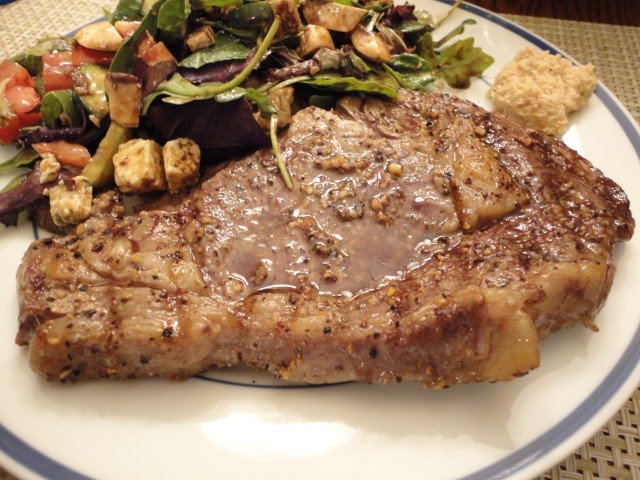
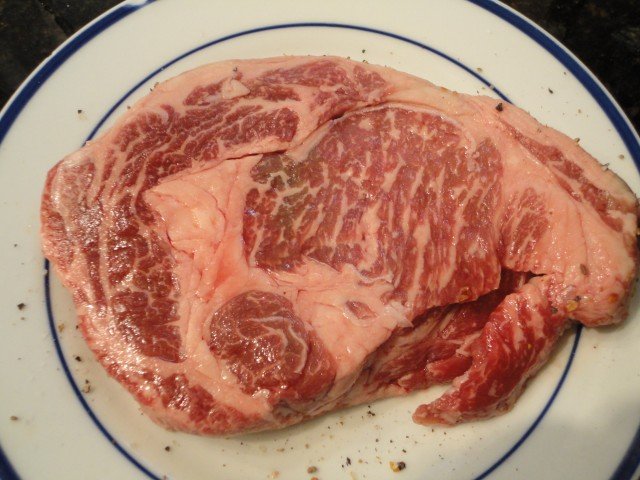

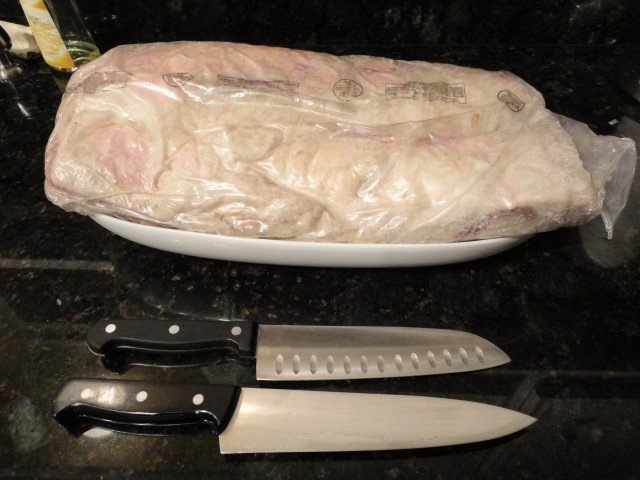
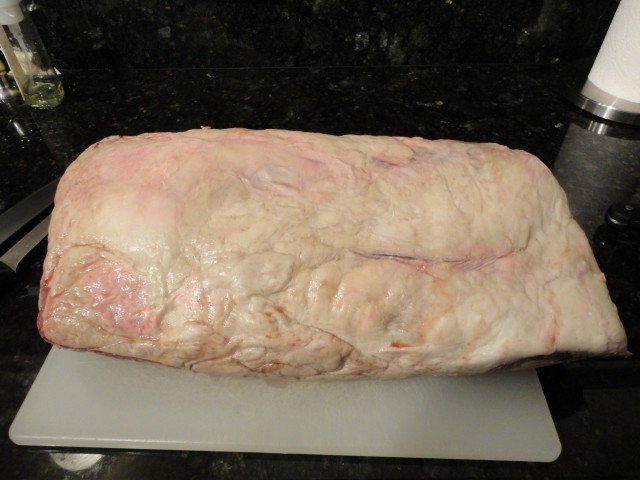

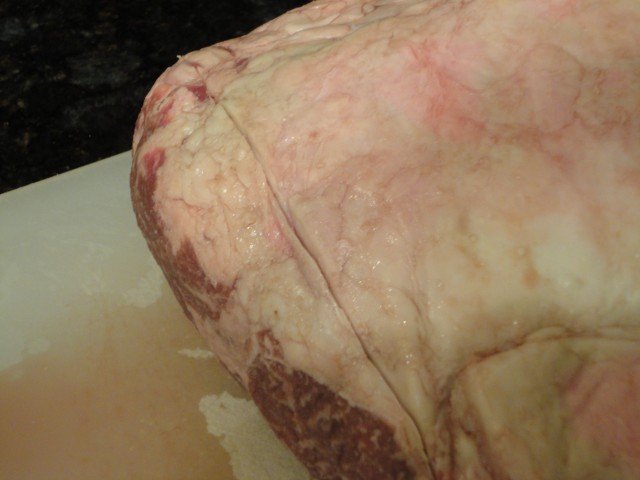



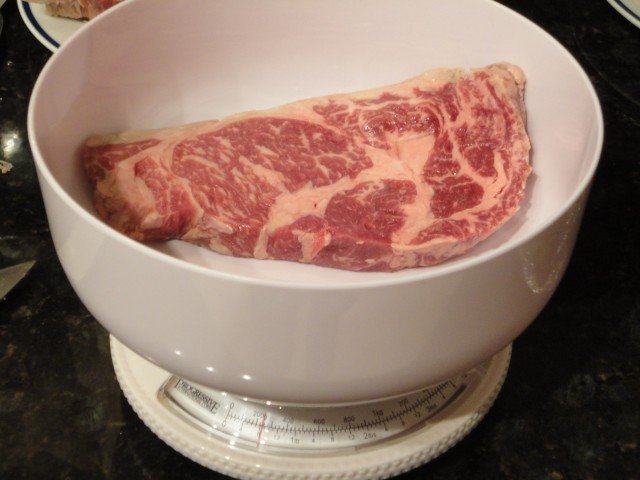
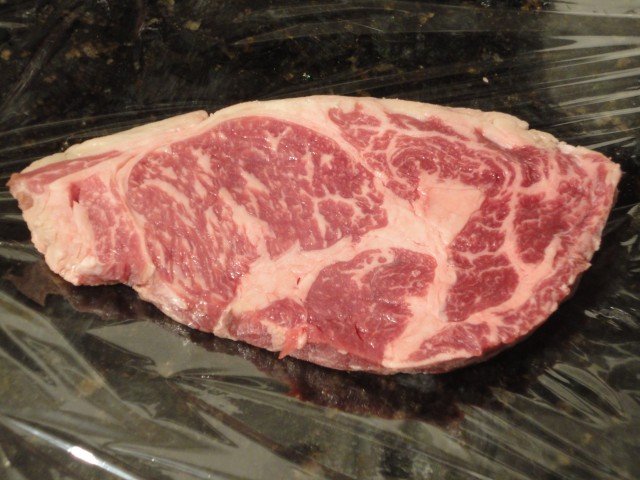
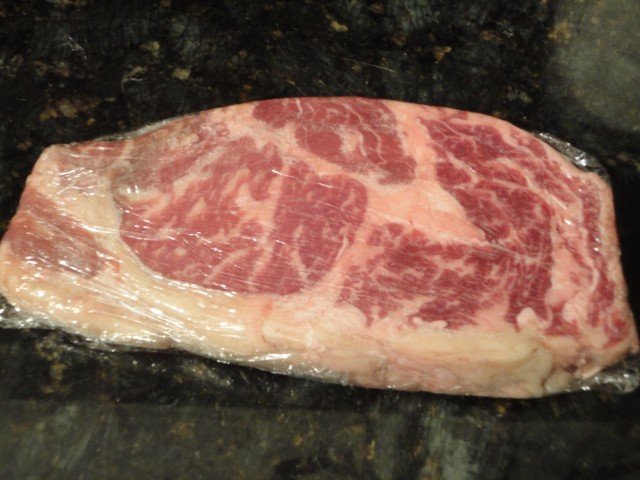
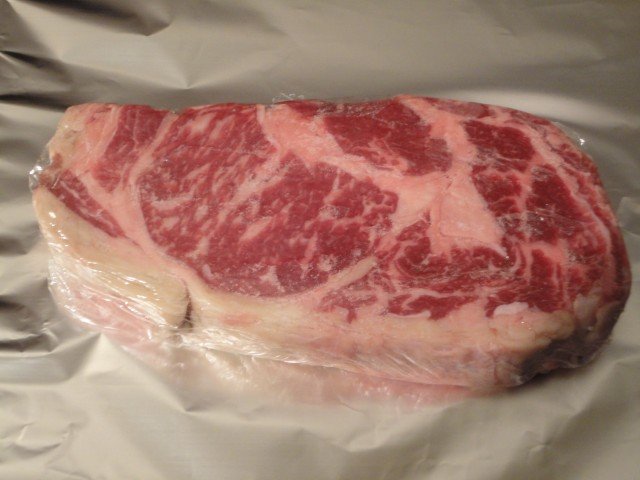
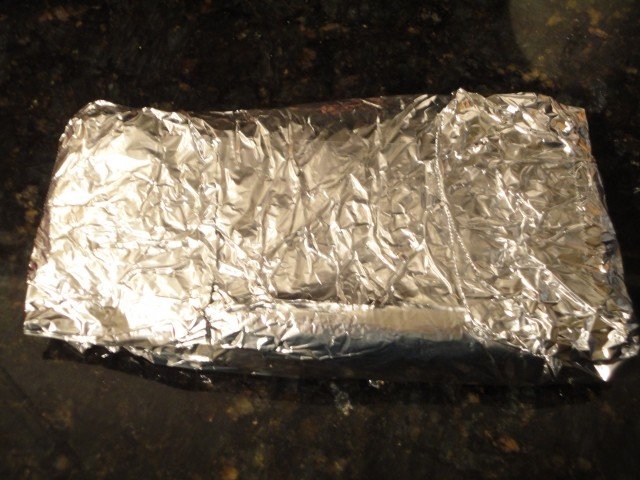
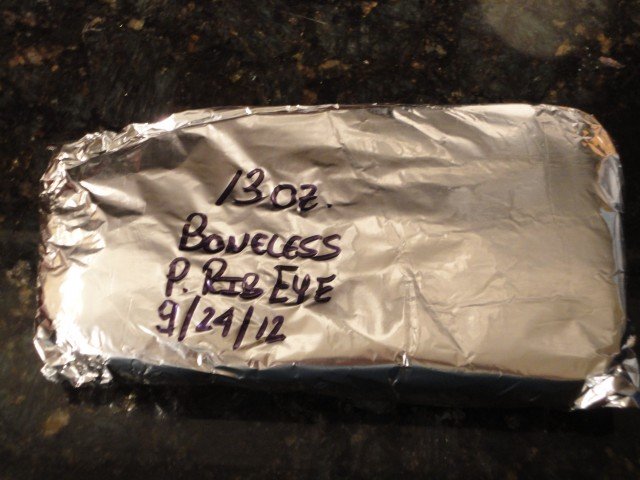
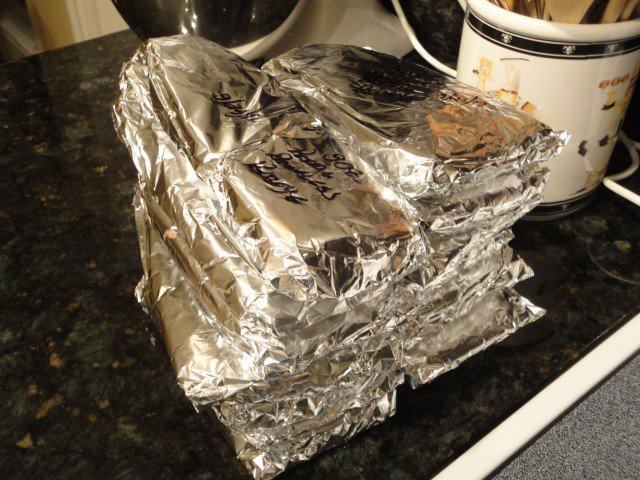
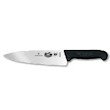



4 comments
Skip to comment form
Do you have any idea where I might buy something like the rib-eye primal you highlighted in your article?
Your best bet it probably speak to a local butcher, or a wholesaler like Sam’s Club or Costco.
Thanks; I learned SO much. I already get the young fellow to cut my N.Y. steaks cut in half. But those big Rib Eyes? I was intimidated! Now I can go in confident & order politely yet knowingly aask for the correct cut! Yay!
This article was extremely helpful!! I used your instructions, and the Rib Eye steak came out perfect! Thank you!!